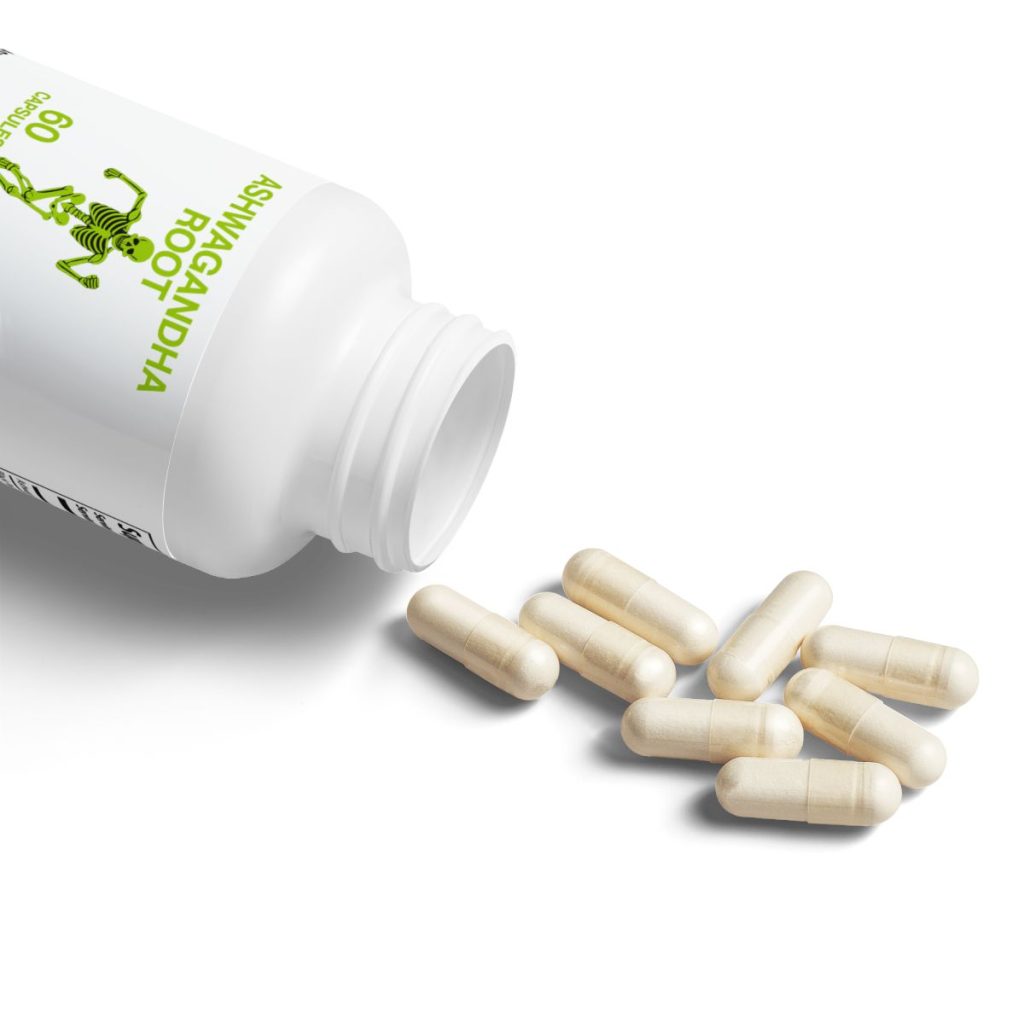Special Elements
Best Avocado, Aguacate Rankings, Benefits & Experience
The avocado, or aguacate, is a most miraculous food, for human optimization!
Avocado is easy to get a hold of and many farms produce the best avocados today.
In Central America, and at Nutritional Diversity & Permaculture Learning Centers, avocado trees are easy to grow.
Nutritional Diversity diet recommends 1 avocado fruit per day, in combination with recommended foods listed in the Nutritional Diversity section of the Plant Benefits chart below.
Three leaves, in smoothies or chewed and swallowed throughout the day, is also recommended.
Avocado leaves are great roughage for the promotion of steady bowel movements.
“Alligator pear, also known as the avocado,” in Spanish called the “aguacate” from the tree Persea Americana of South Central Mexico, the Lauraceae family, refers to the large berry with a single, large, quickly and easily starting seed – one of the largest basal angiosperm families with over 50 genera.
High in healthy fats, the avocado is a unique fruit of roughly 4.5 grams of fat, 3 grams of carbohydrate, and 2 grams of dietary fiber.
Many diverse studies show it to be a significant and broad source of human health benefits.
The massively popular fruit among health enthusiasts can weigh anywhere between 8 ounces (220 grams) and 3 pounds (1.4 kg), and is usually green to black in color, ripe when soft.
Substitutes and similars for avocados are coconuts, papayas, olives, zapote, aloe. Try these foods separate to know them, and consume as mix and apply topically too as a mix for ultimate benefits.
High potassium mineral intake is supportive of healthy blood pressure levels, and preventative of strokes, heart attacks, and many other health problems.
Most people on the modern diets as we know them now don’t get enough potassium, which avocados are a great source of (14% FDA daily recommend) even more than bananas (10% FDA daily recommend).
In general, a Nutritional Diversity diet diversity of greens solves this lack of mineral content in today’s dieter. The best aguacate is immensely for this because of the way it increases the uptake of these elements form other foods.
A Nutritional Diversity diet plan is a helpful, natural food digestion and optimal, nuclear like uptake. Nutritional Diversity diet recommends an avocado or two a day in small spread out servings. This is also because of it’s high, healthy oil content also – Nutritional Diversity athletes need to stay well oiled!
Oleic acid, a monounsaturated fatty acid, also the larger component of olive oil is helpful in reducing inflammation and even has been shown to have helpful effects on genes linked to cancer. 77% of the Avocado, is fat.
Avocado oil, is resistant to heat oxidation, making it a preferred cooking oil.
Saleable fats and oils in the avocado promote an optimal intake of other foods. It is a natural ingredient to Nutritional Diversity, especially here in the beautiful tropics of Central America.
Avocado fat is invaluable to ketogenic dieters.
Aguacates are loaded with fiber in Spanish “lleno (yeno) de fibra.” I will give you three Spanish things to learn in this article to make it more dynamic.
Fiber is central to the NDdiet, and a huge part of muscle building, muscle maintenance, and regularity which all make up our health together.
Much of this dietary fiber is an indigestible plant matter that can contribute to weight loss, reduce blood sugar spikes and is strongly linked to a lower risk of many diseases.
27% of daily recommended soluble fiber is contained in a 3.5-ounce avocado (25% of the fruit fiber is soluble, 75% insoluble fiber).
Soluble fiber is known to help the intestines and optimize the functionality of our bodies.
Diseases in the heart, are the most common cause of death in the world today. Certain blood parts such as triglycerides and cholesterol, as well as factors such as pressure, are identified as factors that affect heart risk.
Amazingly and through thorough study and testing, the avocado has shown to be capable of reducing cholesterol levels significantly LDL by 22%, while increasing HDL ‘good cholesterol’ by up to 11%, also reducing blood triglycerides by up to 22%.
Note: Today’s thinking regarding cholesterol reduction could very much be off course, in the way that we are concentrating on reduction we may be better to concentrate and focus on conversion. Cholesterol could still be ingested in high volumes, through exercise and Nutritional Diversity, cholesterol is converted at a very steady healthy and routine rate.
Best Avocado is rich in soluble fat, is a nutritional uptake assistant to other nutrients in the stomach. This fat enhances the life of the resident digestive culture or microbiome.
A recent study showed that adding avocado or avocado oil to either salad or salsa can increase antioxidant absorption by 2.6 to 15 fold.
Benefits of an avocado a day include eye health and support and glaucoma, vitamin B, brain support, preventative measures against colon cancer, stomach cancers, and altimeters disease.
Carotenoids are important to life, their digestion is heavily aided by fats they don’t have, for example, sweet potatoes, carrots, and leafy greens contain very little fat (less than 1 gram per serving).
For improving carotenoid absorption from carotenoid-rich foods, researchers have experimented with the addition of avocado to meal options including salads, sides of leafy greens, and small servings of carrots, or tomato sauce. Traditional use indicates this benefit also.
The amount of avocado added has varied from study to study but averages approximately 1 cup or 1 small/medium avocado providing 20-25 grams of total fat.
As expected, this added avocado has been shown in the study to increase absorption from all of the foods listed above. Anywhere from two to six times as much absorption was found to occur with the added avocado!
These results are both in favor of eating high nutritional biodiversity of species and eating avocados, every day.
In addition to this increased absorption was a much less anticipated result in a recent study: not only did avocado improve carotenoid absorption, but it also improved conversion of specific alpha, and beta carotenoids (most importantly, beta-carotene) into active vitamin A.
This health benefit of increased conversion was determined by the measurement of retinal esters in the bloodstream of participants, which were found to increase after consumption of carrots or tomato sauce in combination with avocado.
FUN FACT: Research on avocado fruit shows that the greatest phytonutrient concentrations occur in portions of the food that we do not typically eat, namely, the peel and the seed (or “pit.”) The pulp of the avocado is actually much lower in phytonutrients than these other portions of the food.
NDdieter’s don’t use seed material, but the skin goes in smoothies. We had one guy even doing a really good friend snack but we had no time to catch how he did it! No regrets.
Let’s check out the best avocado sources that can be dropped off to the pantry!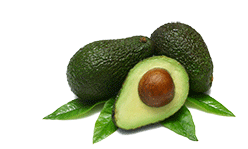
AVOCADO RANKINGS
With any natural fruit, it is best to get the actual thing from a loving grower you know, this way you can get the leaves too.
In the meantime, until you find that special best avocado grower and in addition to that,
1. The Real Californian Thang
This haas type best avocado supplier has the best reputation on Amazon for large order whole avocados.
Universally accepted by professional nutritionists, the avocado is an outstanding combination of vital minerals, essential fatty acids, and vitamins required to sustain a healthy body.
Remember April through September is rough for avocado orders so November through February is your time to stock up. Luckily they are easy to stack in the refrigeration spaces.
They are an extremely nutrient-dense fruit without trans fats, cholesterol, and sodium and high in unsaturated fats which can help lower blood cholesterol levels.
Free shipping!
2. Better Body Oil
As far as we are concerned the whole food and the oil are must-haves.
This product has great reviews, great price and passed greatly our taste and topical testing! We ran the best Ozone machine through it and there was no change showing a pure product.
Takes the Heat – With a high smoke point of 500°F it’s great for stir-frying, sautéing and more
Better Cooking – With similar monounsaturated fat, Avocado Oil is like olive oil you can cook with
Flavor Savor – A mild, smooth flavor that enhances other foods and takes the place of cooking oils
Naturally Refined – Non-GMO and Gluten-Free. The perfect addition to the Whole30 and Paleo diet
Deliciously Diverse – Great for high-heat cooking or using cold on salads
3. Kumana Sauce
Avocado sauce making with real avocados is fun and easy!
Until you can time for it, these guys have done an excellent job!
Consumer tips: 1 order a few other things to get free shipping. 2 Pay attention to sizes and flavors there is some variety there.
4. LA Tourangelle
This is a popular oil provider for many types. With over 1400 happy customers for this best avocado oil, one it would seem cant go wrong.
5. Italian salad dressing
Well priced with over 1000 happy customers this is a great salad sauce to have around.
6. Primal Kitchen
This product has over 2000 reviews! Made popular by the primal kitchen promotions, the first-ever crocodile pear oil – healthier mayonnaise!
Made with cage-free eggs. Nice to not support abusive practices aye!!
7. Kevala
I always like to get the big sized oil, especially with common oils like the best avocado oil.
8. Now
1400 Happy customer reviews.
9. Primal Kitchen
Over 200 happy customer reviews.
10. Kiels Eye Cream
Topical application is best still with the actual thing, but if your on the road and need something more portable that keeps this is your guy.
AVOCADO BENEFITS
The best avocado “superfood” presents a myriad, or odyssey of benefits, the Persea Americana fruit, tree, and leaf has been severely important to Americans for ages. 1
The diverse species found to have 100 accessions comprised of the three racial types, Guatemalan, Mexican, and West Indian and today plenty of diversity across many cultivars are available. 2
The avocado oils can be an essential part of life, skin health, and digestive promoter. 3
Avocado (Persea Americana) belongs to the family Lauraceae, one of the largest basal angiosperm families with over 50 genera. Basal angiosperms are the first and oldest families of flowering plants that originated well over 100 million years ago and are represented by only a few hundred species compared with hundreds of thousands of species of monocot and eudicot angiosperms. Indications suggest avocado oil may be as valuable as olive oil and coconut oil. 4
AVOCADO SIDE EFFECTS
Side effects and toxicity has been evaluated to occur in cases where too much of the plant is ingested.
Despite tons of articles recommending seed and skin use, the toxin “persin” that is in those two materials causes heart damage and brain damage in small animals. They are quite toxic to horses. [x]
Whereas s there could be homeopathic applications, they should be controlled and few with far between time.
Generally, Nutritional Diversity Diet Sciences subscribers do not use seeds and seed foods in our diet.
AVOCADO EXPERIENCE
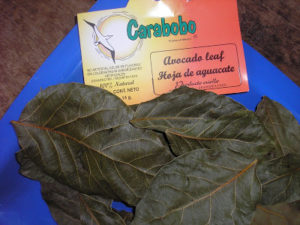 One thing Nutritional Diversity does unlike other health sites and research groups is we don’t leave out the rest of the miracles from miracle plants.
One thing Nutritional Diversity does unlike other health sites and research groups is we don’t leave out the rest of the miracles from miracle plants.
Avocado leaves are the super solar cell, active production material for the plant and are a sacred part of the experiencing the plant and its benefits.
Avocados are highly nutritious on their own, and they also dramatically increase the nutrient value of other plant foods eaten and the leaves of the aguacate tree.
From their rich fats and porque estas lleno de fibre (because its full of fiber), digestive culture and intestinal inner skin are heavily oiled and aided by avocados, and Nutritional Diversity Science, recommends one to two per day inside I high nutritional biodiversity.
Eating the leaves, by themselves, and with the fruit is an incredibly advantageous practice, that helps convert the fruit, helps bring oxygen and hydration to the body also minerals and most importantly for blood building. In the case of avocado leaves versus others, this is especially true.
Traditionally throughout Mexico, the avocado tree’s homeland and 35% of all cultivations, and now through Central and South America, avocado leaf benefits are recognized. A smaller family passed leaf food traditions also exist backing up the new leaf use.
Quercetin and glikosidan are present in the avocado leaf at about 60 – 75%. Quercetin is believed to capture free radicals in the body, which is very preventative of all degenerative diseases.
Cooking the leaves can cause this chemical in the plant to leave.
Leaves of the avocado tree taste bitter but do produce bacteria such as Staphylococcus sp, Pseudomonas sp, sp protect us, escherichia sp and Bacillus sp. Besides, avocado leaves are also believed to cure bladder stones, high blood pressure, and headaches.
The most recognized cure using avocado leaves is for kidney stones. The essential content of the avocado leaf mostly believed to be the alkaloids; helps eradicate kidney stones.
The tea described below is used every morning in combination and additional 3 whole green leaves mashed, blended or heavily chewed throughout the day. Kidney stones should denigrate into sandy material. This herb practice may be discontinued after all sand matter is passed. Taking off the green uncooked, or heated leaf matter daily is recommended.
Should kidney stones be resistant to this cure, I recommend Edgar Casey’s turpentine topical compress. Simply apply warm water to a cloth, (can use a heat pack) one tablespoon turpentine, and compress the area of the kidney while resting.
AVOCADO DISCUSSION
Nutritional Diversity science recommends healing teas, soups, and heated preparations are cooled before ingested and be taken only for healing purposes, teas should not be taken regularly, because of the way they inherently offset the body’s PH.
Avocado leaf tea can be made with seven big avocado leaves in 2 liters of water. Allow boiling for 10 to 15 minutes. The tea will be yellow, orange or red. Drink this tea for 10 days and this will cleanse kidneys and heal debilitating kidney pains.
I like to do this with mango leaves, banana leaves, and a few others..
Nerve pain, stomach pain, swollen airways, and irregular menstruation can also be treated with this tea.
Traditionally in the area of Oaxaca, avocado leaves are used in black bean cooking, for flavor and added nutritional density.
Avocado Seed
There is a popular internet discussion right now on whether or not to eat the seed. While researchers are able to find out that there is a wealth of nutrients in the seed, more so than in the fruit even, many health enthusiasts have different things to say. The California Avocado Commission recommends against seed, consumption, as many others do. On the flipside, there is a wealth of folks out there recommending the seed for consumption, shredding it with a cheese grater, and making viral shares on social media explaining the “advantages of eating the avocado seed.”
Seeds, in general, are the sacred growing and procreation method of the avocado plant/tree. Generally, seeds are highly recommended by Nutritional Diversity, for the reason that they are all very nutritious (som

Avocado seeds in my shaker cup just to make sure they get home, before planting back at the house…routine.. in six months $6 to $12 babies (depending on the food I give my food) for grafting and trading and installing.
e very toxic, in toxic plants,), and normally have more powerful concentrations of nutrients than the other parts of their respective plants.
We don’t do seeds much in NDdiet plans.
Topical Application
Skin Rehabilitation
Nutritional Diversity science recognizes that city showers, with chlorinated and city processed waters damage the skin, and fight the human optimization effort.
Avocado leaves mashed and applied to the skin, with some water or creamy avocado meat applied to the skin for 15 minutes, can cure some of the worst of dry skin cases.
Avocado leaf mash, and seed powder, is incredibly effective also at cleaning the pores, it is seriously in combination with the meat of the fruit, one of the best things the Nutritional Diversity Top Team has ever tested in our skin trials – which we have been doing very regularly for the past 3 years, and encourage you to do the same, and share your information with us! Those concerned with ingesting the seed can try seed absorption through the skin, without the added wonder of adverse effects from it.
Studies on avocados leaves have shown benefits on a wide variety of afflictions, including cavity support, bone support, back pain, and inflammation reduction.
Because of the avocado’s nutritional absorption assistance values, I eat and recommend one per day, in two halves usually at lunchtime, and morning breakfast time. I put the leaves into smoothies, and I chew them and swallow them with many other leaves while I work on the permaculture farm.
Avocado leaves eaten right of the plant with 10 minutes of chewing, per bite, is most highly recommended. This grade A+++ oxygen in the blood, bone health, bowl “sweeping” and joint support all in one leaf.
Avocado skin, seed, and twig are also recommended indigestible for roughage and numerous health benefits (heavy chewing required, gum and teeth benefit).
Skin and hair mashable using the fresh leaves, and the fruit cream have instantaneous and tremendous benefits to the skin, hair, and skin problems. Topical feeders, humans are able to digest and uptake nutrients through the skin. I do a face topical while I work in the sun, if I am not using gloves I may add some to the back of my hands’ shins if in shorts, etc. The effects are very healthy and drastic at that.
You want to have a couple of avocados on hand at all times. If stomach, or nutritional sickness sets in, many times from athletic supplements, one avocado is the medicine.
Downing some avocado quickly in the athletic competition can immediately relieve many interfering stomach symptoms that sometimes quickly come up, that hinder performance and discourage, and distract. Ginger and yellowish blackish plantain or banana, grapes, and celery can follow if relieve are still needed.
Avocado can help the body deal with protein shakes and herbal supplements a little better. Avocado will put fat on the body if too much is eaten if the dieter is not in a keto diet. It is important to find out how your body uses and relates to the avocado. I myself, don’t eat them with any carbohydrates because they are an opportunity to get into a state of nutritional ketosis if even a short while.
Avocado can relieve small holdbacks from skin problems. As a topical application avocado can bring a small of energy back into the human system, that may be trying to repair or fighting with skin fungus, skin mucus (acne also), skin dryness or dirtiness.
I put some on something eat time I eat one, the effects of cleaning, and nurturing skin are phenomenal. I like to use avocado, aloe, coconut and jackfruit material on my skin to help immensely with scrapes and bruises from wrestling and boxing all the time.
I personally feel like if you put it on your skin (the first step of edible food testing) and immediately you feel great and see great visible results quickly; you are using something, great.
AVOCADO FAQ
Q. Where is avocado originating from?
A. The jury is still out but the avocado tree most likely originates from south-central Mexico.
Q. What form of avocado plant is it?
A. The avocado tree is a plant that grows to 20 m (66 ft), with alternately arranged leaves approximately 12–25 cm (4.7–9.8 in) long.
Q. What are the nutritional contents of avocado?
A. Avocados have several B vitamins and vitamin K, with good content of vitamin C, vitamin E and potassium. Avocados also contain phytosterols and carotenoids, such as lutein and zeaxanthin. Avocados have a variety of fats as well.
Q. Do avocado plants come in different varieties?
A. Yes indeed. Different species have been bred to produce better strain relative to climates and growing conditions.
Q. How does avocado plant look?
A. Typical avocado trees have panicles of flowers with deciduous bracts arising from new growth or the axils of leaves. The flowers are inconspicuous, greenish-yellow, 5–10 mm (0.2–0.4 in) wide. The species is variable because as a result of human selection. The avocado fruit is a single-seeded berry. The pear-shaped fruit is usually 7–20 cm (2.8–7.9 in) long, weighs between 100 and 1,000 g (3.5 and 35.3 oz), and has a large central seed, 5–6.4 cm (2.0–2.5 in) long.
Q. When does the avocado plant blossom?
A. Bloom time is between January and March. The trees sometimes bloom off-season during the year and these flowers occasionally set fruit as well. Some varieties of avocado can bloom and produce fruit during alternate years.
Q. What kind of substances avocado also contain?
A. Avocado fruits contain a variety of fats. 67% of total fat is monounsaturated fat present as oleic acid. Other predominant fats include palmitic acid and linoleic acid. The saturated fat content accounts for up to 14% of the total fat. It is a rich source of energy given such a large fraction of fat content.
Q. How is the breakdown in calories for avocado?
A. 40 grams of avocado fruit contains 64 calories, of which 6 grams is fat and 3.4 grams comes from carbohydrate. There is less than a gram of sugar and almost 3 grams of fiber.
Q. Given such high fat concentration, is avocado good for health?
A. Avocados are full of beneficial fats that keep us full and satiated. Consuming fat serves to make our brain receive a signal to turn off your appetite. Eating fat also slows the breakdown of carbohydrates, which in turn helps to maintain sugar levels in the blood stable.
Q. Is avocado good for the heart?
A. Avocados contain 25 milligrams per ounce of a plant sterol called beta-sitosterol. Consumption of beta-sitosterol and other plant sterols has been known to help keep good cholesterol levels.
Q. Does the consumption of avocado help to keep healthy vision?
A. Avocados contain lutein and zeaxanthin, both of which are concentrated in the eye tissues where they provide antioxidant protection to help minimize damage. In addition, the monounsaturated fatty acids contained in avocados also serve to absorb other beneficial antioxidants, for instance, beta-carotene thus a diet rich in avocado reduces the odds of developing age-related macular degeneration.
Q. What other good benefits does avocado give to bodies?
A. Avocado provides one-quarter of daily intake of vitamin K. Eating a diet with sufficient vitamin K can upkeep bone health by increasing calcium absorption and reducing urinary excretion of calcium.
Q. Does avocado possess anti-cancer properties?
A. Regular intake of folate from avocado has shown positive evidence in protecting the body against colon, stomach, pancreatic, and cervical cancers. Studies also have found that phytochemicals extracted from avocado can selectively inhibit the growth of precancerous and cancerous cells while causing the death of cancer cells. These phytochemicals also promote proliferation of immune cells called lymphocytes.
Q. Does avocado help prenatal health?
A. For a healthy pregnancy, folate contained in avocado is essential and its intake reduces the odds of miscarriage and neural tube defects.
Q. Does eating avocado elevate our mood?
A. Foods containing folate may reduce the risk of depression because folate prevents the accumulation of homocysteine, a substance that can slow circulation and delivery of nutrients to the brain. Excess homocysteine can inhibit the production of serotonin, dopamine, and norepinephrine, all of which play a role in regulating mood, sleep, and appetite.
Q. What precautions should we take towards avocado?
A. Avocado leaves, bark, skin, or pit are documented to be noxious to most animals. The fruit is poisonous to some birds.
Q. How does avocado help in digestion?
A. Avocado consists of 7 gram of fiber and foods with natural fiber can help prevent constipation, maintain a healthy
digestive tract.
Q. How does avocado help in osteoporosis treatment?
A. Avocados contain a substance called saponins which are known to help relieve symptoms in knee osteoarthritis.
Q. Which countries lead in the production of avocados?
A. In 2017, the world production of avocados was 5.9 million tonnes, topped by Mexico with 34% of the total trailed behind by the Dominican Republic, Peru, Indonesia, and Colombia.
Q. Are there other uses involving avocado?
A. Avocado oil can be used for cooking, for moisturizing the skin or hair.
AVOCADO RECAP
As more and more is learned and the info gets out on avocados, the more they go up in price. Avocado prices have been on a steady incline over the last decade.
Avocados are a top ten must-have for a Nutritional Diversity diet.
Avocados are also selected for our initial recommendation in part because today they are harvested from trees, likely planted before GMO. A fruit tree is a type of growing crop that farmers are less likely to use products such as round-up (glyphosate) on.
RELATED MATERIAL
This list would go well digestively with the alligator pear.
Additional Reference
- Wall ME, Wani MC, Brown DM, Full F, Oswald JB, Josephson FF, Thornton NM, Pezzuto JM, Beecher CWW, Farnsworth NR, Cordell GA, Kinghorn AD. Effect of tannins on screening of plant extracts for enzyme inhibitory activity and techniques for their removal. Phytomedicine. 1996;3:281–285
- Hashimura H, Ueda C, Kawabata J, Kasai T. Acetyl-CoA carboxylase inhibitors from avocado (Persea Americana Mill) fruits. Biosci.Biotechnol.Biochem. 2001;65:1656–1658
- Nocter G, Rees D, Young AJ, Horton P. (1991) The relationship between zeaxanthin, energy-dependent quenching of chlorophyll fluorescence, and trans-thylakoid pH gradient in isolated chloroplasts. Biochim Biophys Acta 1057: 320–330
Originally Published on Oct 24, 2016, Updated March 2, 2019
Agriculture
NUTRITIONAL DIVERSITY SUPPLEMENTS
ND Supplements
Best Ashwagandha Rankings, Benefits & Experience
The best ashwagandha is one of the most famous and central of Ayurvedic herbs, and for good reason. The odor of horse (‘ashwagandha‘ translated). Withania somnifera, known commonly as ashwagandha, Indian ginseng, poison gooseberry, winter cherry, or urine of the cows, is a plant in the Solanaceae / nightshade family.
Ayurveda, roughly translated into “Knowledge of life”, if which the magic herb is center in therapeutic measures to boost physical, mental, social, and spiritual harmony in order to improve the total quality of life. [x]
Several other species in the genus Withania are morphologically similar, which means at a microscopic, or not level, the anatomy or structure of the plant closely resembles that of other plants, in this case in the nightshade family.
The tomato is of the nightshade family. Cucumbers and peppers, too. ND normally goes very light on nightshades; peeling and de-seeding are very important with them because of the ‘lectins’ they carry. These lectins are proteins that act as splinters to sugar molecules that together create toxins that dull performance and cause signs of aging. The *could be bypassed by leaf-only consumption.
There are many a processes involved with eating from the garden, and they should be. It is like a video game after a while, trying to find the hidden way and unlock the power of nature and her armada of trillions upon trillions of species that work together as a divine organ playing the tune of life. We will never understand it all in this lifetime.
Ayurveda is the oldest surviving written system of healing and optimization. Popular herbs in today’s culture, such as the popular 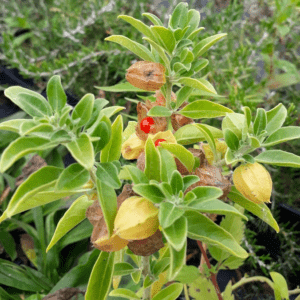 root of turmeric or cousin ginger, are two other plants of the same family with similar morphological benefits.
root of turmeric or cousin ginger, are two other plants of the same family with similar morphological benefits.
The ND Sciences Group has been using each of them for temporary use treatment, not for regular use treatment.
The use of the best ashwagandha in Ayurvedic medicine extends back over 3000 to 4000 years to the teachings of an esteemed rishi (sage), Punarvasu Atriya.
It has been described in the ancient principle sacred texts of Ayurveda, including the Charaka and Sushruta Samhitas.
Ashwagandha is also used as an “adaptogen” to help the body cope with daily stress, lower blood pressure and as a general tonic to improve immunity.
Many don’t realize that when certain plants are used together they can unlock a new level of effectiveness.
Oftentimes these ‘together’ effects can be unlocked through the use of other plants such as the best hot peppers, other peppers, and black pepper.
Withania somnifera has been a principal ingredient in many herbal remedies and green juices, throughout time.
Let’s check out the best ashwagandha we can order up today and get it into our system tomorrow!
ASHWAGANDHA RANKINGS
BEST ASHWAGANDAH BY NUTRITIONAL DIVERSITY
ASHWAGANDHA BENEFITS
Treats Alzheimer’s and other neurological conditions, effects of HIV. [1,a]
A maximum stress relief agent, [2,a] and even a sleep-inducing aid. [3]
Striking antioxidant properties are contained in the miracle herb. [4]
Like the best gotu kola, the herb acts in many ways as a brain cell protector, displaying anti-cancer actions and compounds have neuroprotective effects against glutamate insult, a potential that may serve as a great supplement for brain health. [5,a,b] Also as a strong general anti-anxiety and oxidative stress reducer [c]
Anti-cancer activity is a main study of the best ashwagandha herb, and has been known as a cancer medication for a long time. [6,a,b,c] Key essence known as Withanone.
Hello ladies, the abracadabra vowel arranged herb enhances sexual function, atop all these other things. [7] The shrub has enhancing effects on the reproductive system overall. [8]
Also like gotu kola, the best damiana and many medicinal shrubs of her type, ashwagandha can be helpful to insomnia and nonrestorative sleep (NRS) issues. [9]
The Ayurveda staple even helps regulate correct body weight. [10]
Important brain activity changes have been noticed and evaluated in a really interesting study whereas mice were dosed with Scopolamine, an alkaloid from the Datura flower I have a little experience with that of many things that cause amnesia. Withania somnifera, the hopefully memory restoration ingredient. [11]
The blessing is anti-aging, and anti-free radical. [12] She is packed with serious vitality enhancing substances and steroidal compounds have been extracted from her seeds. [13]
Cognitive functional improvements and reaction time improvements have been well known for the power herb. [14,15]
The superfood has been the focus of regenerative health possibilities is an ongoing track of study. [16]
Glutamate neurotoxicity a cause of some stroke, head trauma, multiple sclerosis, and neurodegenerative disorders has pointed a search for herbal remedies. [17]
In the traditional system of medicine in India, the magic herb has been used to treat rheumatoid arthritis. This could surely be helped further by the addition of turmeric. [18]
The magic plant is traditionally used in treating epilepsy, depression, arthritis, diabetes, and palliative effects such as analgesic, rejuvenating, regenerating, and growth-promoting effects. [19]
examine the possible effects of ashwagandha root extract consumption on muscle mass and strength in healthy young men engaged in resistance training.
A great 8-week, randomized and prospective, double-blind, placebo-controlled clinical study using 57 young male subjects 18–50 years of age, with basic experience in resistance training who were then randomized into magicherbtreatment (29) and placebo (28) testing groups.
Testers in the ‘treatment’ group consumed 300mg of withania root extract twice daily, while the control group ate starch placebos.
This study reported that ashwagandha supplementation is concretely associated with and supportive of significant increases in muscle mass and strength and concluded suggesting that ashwagandha supplementation may be a powerful add-in fop a resistance training program. [20]
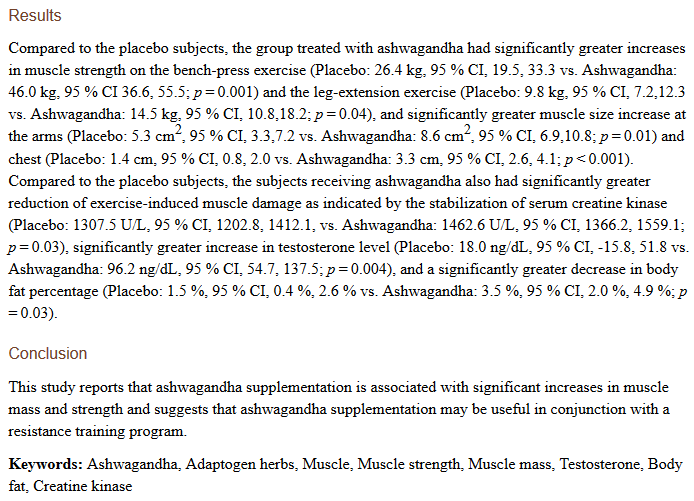
Overall vitality study finds in this 16-week, randomized, double-blind, placebo-controlled, crossover effects on fatigue, vigor, and steroid hormones middle-aged men, that 8 weeks of supplementation with an ashwagandha extract {Shoden beads, 600 mg daily delivering 21-mg withanolide glycoside} was indeed associated with significant improvements in salivary DHEA-S and testosterone production. [21]
An in-depth study on withania suggested her as a valuable natural drug for the treatment of cancers specifically carrying a p53Y220C mutation, which are the large majority of them. Using molecular docking tools and bioinformatics, they were able to test the herb against tumor suppressor p53 protein who is frequently mutated in a large majority of cancers. [22]
General wellbeing, sleep, and mental alertness during the day for elderly individuals is improved through the best ashwagandha supplementation of 600mg of extract per day. [23]
The herbs popularity also comes from the treatment of epilepsy, depression, arthritis, diabetes, and palliative effects such as analgesic, rejuvenating, regenerating, and growth-promoting effects. [24]
ASHWAGANDHA SIDE EFFECTS
Headache, sleepiness, and stomach upset have been reported in clinical studies when doses become very high. Remember to start slow with all things, rare allergic reactions are always possible.
Withania somnifera is regarded generally as very safe. [x,x]
ASHWAGANDHA EXPERIENCE
I use the shrub as much as possible, it grows at certain locations I visit it frequently. I am new to knowing her personally.
Ashwagandha ‘s History & Modern Use
Traditionally, ashwagandha has been given as a nerve tonic and adaptogen, which means as an agent to helps people adapt to various emotional and physical stressors.
It was classically used in India for nearly 5,000 years for conditions such weakness and debility in old age, hardships while young, constipation, insomnia, nervous conditions, stress, goiter, joint inflammation, parasites, hormone balance, and rheumatism – sort of a cure-all bring the overall system up herb. Good Nutritional Diversity diet plans want as many species with that feature as they can get in.
In old days a paste even made from the ashwagandha root, powdered then applied topically as a treatment to boils, cancers on the skin or gums, and other health threatening-looking tissue.
Ashwagandha is known to help people strengthen their immune systems after illness, chemotherapy, and surgery. It is a highly effective, evidence-based remedy to help reduce levels of stress and anxiety by lowering cortisol levels, and a plethora of other ways, to reach the end goal.
The scientist is quick to point out the presence of triterpene lactones, withanolides, withaferin A, alkaloids, steroidal lactones, tropine, and cuscohygrine, and other relatively powerful and recognized plant essences and chemicals realized form the laboratory dissection of the plant – something that in the pursuit of healing and performance anyway, is not necessary.
Alternative Use of Ashwagandha
Now people have matched the magic herb to a stack of conditions such as arthritis, anxiety, bipolar disorder, attention deficit hyperactivity disorder (ADHD), balance, obsessive-compulsive disorder (OCD), trouble sleeping (insomnia), tumors, tuberculosis, asthma, a skin condition marked by white patchiness (leukoderma), bronchitis, backache, fibromyalgia, menstrual problems, hiccups, tumors, tuberculosis, asthma, a skin condition marked by white patchiness (leukoderma), Parkinson’s disease, and chronic liver disease. It is also used to reduce the side effects of medications used to treat cancer and schizophrenia.
Like ginger, ashwagandha is said to reduce fat and sugar levels in the blood. A very similar list seems addressed by another shrub the same size; Ambrosia.
The soft two and a half foot shrub sometimes with small berry, is easy to grow in pots, and around the permaculture farm in sunny to partial, in dry stony earth. It has fury leaves and green parts and grows the orange to red fruit inside of a case that looks like the roof of the Kremlin, made from linen.
ASHWAGANDHA DISCUSSION
We ranked the best ashwagandha Withania somnifera, supplements to asses real source quality, refer the potent medicinal herb to clients as an alternative to other substances and to further our studies of plants and plant nutritional effects across I wider range of experiment and examination.
We looked hard at the warm looking herb whose fruits come in Kremlin-like domes that really help aerate and nutrify soil mixes, and we took time to consider what factors were important, and what factors were not while selecting the best Withania somnifera, herb source.
This is done by our company because we think one day the referrals could help us to provide this cutting edge information and because we need to find out and refer only the best product to our group of readers.
The Withania somnifera, is very applicable to the ND food combinations and ratios we have been working on in the last few years. She fits right in. We mark her high, on the demand list for our clients, permaculturists, athletes and general followers.
This is one of the ones we have spent a lot of time on.
Third-party testing of the substances available was required for ranking in this particular recommendation.
At least one hundred positive user statements are materials were the second requirement we had in this eval.
Anytime there is a good combination herb or benefits for any given substance we are sure to make mention of that. In this case turmeric for arthritis maybe jackfruit too, and damiana and or mango for energy and sexual performance and function restoration, gotu kola or dormilona (which acts more as a stimulant for me personally) for sleep and insomnia, and papaya for high-octane digestive capabilities and ginger for blood management. Black pepper, hot pepper, salt, oils and avocado can always improve uptake.
ASHWAGANDHA FAQ
Q: What is the best ashwagandha combination ND research is aware of?
A: The best damiana. The combination can be too much for some. Go slow. Haste makes waste.
Q. Can ashwagandha help me lose weight?
A. It can. If your body reacts to stress by gaining weight either through metabolic changes or through changes in appetite, the best ashwagandha can help immensely by helping to decrease stress.
Q: Does ashwagandha conflict with other herbs?
A: Surely to some degree of conflict there are a few out there, but in contrast thinking towards diversity and that natural lesson, the combinations we have found are the real focal point for this diva.
Q: Why the singing references?
A: Everybody is singing something no? I prefer honest songs. That is guaranteed in the plant world, and “if you grow them then you can know them.” They are always up for that, and they are always honest what more can you want?
Q: Is ashwagandha a topical herb?
A: One way to find out. Try it. To really get anywhere with nutrition one must remain forever experimental. Safe and logical but not totally in fear – this will get you nowhere. Fear is the Black Hole. Remember that. We will get back to you on this.
Q. What plant family is ashwagandha a member of?
A. Ashwagandha is a plant in the Solanaceae or nightshade family.
Q. What form of ashwagandha plant is it?
A. This ashwagandha plant is a short, tender perennial shrub attaining a height of 35–75 cm (14–30 in).
Q. What well known medicinal properties do ashwagandha possess?
A. The plant, particularly its root powder, has been used for centuries in traditional Indian medicine.
Q. How does ashwagandha look?
A. The ashwagandha plant has hairy branches extending radially from a central stem. Leaves are dull green, elliptic, size of which is up to 10–12 cm (4 to 5 in) long. The bell-shaped flowers are small and greenish. The fruit is orange-red.
Q. When does the ashwagandha plant mature and ready to be harvested?
A. Ashwagandha is ready to harvest in 5 to 6 months when flowers and berries start to form and leaves begin to desiccate.
Q. What kind of substance do ashwagandha also contain?
A. Ashwagandha contains withanolides, withaferin A, alkaloids, steroidal lactones, tropine, and cuscohygrine. Notably, withanolides are structurally similar to the ginsenosides of the ginseng family.
Q. What conditions are favorable for ashwagandha plants?
A. Ashwagandha is a drought-tolerant plant and grows in dry soil, once put down. Ashwagandha grows best when the temperature ranges between 70 F – 95 F (20 – 35 C).
Q. How does ashwagandha fame come about?
A. Ashwagandha is an important herb in Ayurveda, which is a form of alternative medicine based on Indian principles of natural healing.
Q. Does ashwagandha support heart health?
A. Ashwagandha has been shown to induce cholesterol- and triglyceride-lowering actions. This in turn will work for your heart, reducing cholesterol and lowering blood pressure altogether.
Q. What can ashwagandha do about the inflammation?
A. Various studies have been conducted and evidence has been pointing to that ashwagandha helps decrease inflammation by increasing the activity of natural killer cells.
Q. What other good benefits does ashwagandha give to bodies?
A. In studies, it has been shown that ashwagandha had boosted greater gains in muscle strength and size, while reducing in body fat percentage when compared with the placebo group.
Q. Does ashwagandha impact positively on male fertility?
A. It has been reported that ashwagandha increases testosterone levels and largely enhances sperm quality and fertility in men.
Q. Does ashwagandha possess calming effects?
A. Ashwagandha has been demonstrated to fight stress and anxiety in animal and human studies.
Q. Are there precautions for ashwagandha use?
A. Ashwagandha is a generally safe supplement for most people. Since its long-term effects are unknown, pregnant and breastfeeding women are advised to steer clear of its use. Autoimmune-deficient individuals, such as those who suffer from conditions like rheumatoid arthritis, lupus, Hashimoto’s thyroiditis, and type 1 diabetes should also consult with doctors before using it. It also has the effect of decreasing blood sugar and blood pressure levels, so medication dosages may need to be regulated if one takes it.
Q. What is the dosage suggested for taking ashwagandha supplement?
A. The common root extract is usually taken in 450–500-mg capsules once or twice daily.
ASHWAGANDHA RECAP
The best Ashwagandha is brain food and brain protectant.
She another anti-cancer wonder plant, and helps with overall female reproductive systems.
The magic herb may help arthritis. Use with turmeric.
She takes care of some stress too and can sing a song for insomniacs. Stabilize mood and anxiety.
This adaptogen helps people immensely with harsh, extreme, and difficult changes.
Throw some leaves from the magic herb and berry wonder in your water pitcher.
Great all-natural science-backed boost for muscle strength and recovery, as well as mass building.
Just give me the best ranked.
ASHWAGANDHA RELATED MATERIAL
Additional References,
- Deocaris CC, Widodo N, Wadhwa R, Kaul SC. Merger of Ayurveda and tissue culture-based functional genomics: inspirations from systems biology. J Transl Med. 2008;6:14
- Wermuth CG. Multitargeted drugs: the end of the “one-target-one-disease” philosophy? Drug Discov Today. 2004;9:826–827. doi: 10.1016/S1359-6446(04)03213-1.
- Patwardhan B, Warude D, Pushpangadan P, Bhatt N. Ayurveda and traditional Chinese medicine: a comparative overview. Evid Based Complement Alternat Med. 2005;2:465–473. doi: 10.1093/ecam/neh140
Originally Published Oct 19, 2019, Updated April 4 2013, Apr 4, 2020
Special Elements
Best Hot Peppers, The Many Benefits, Rankings, Side Effects & Experience
𝕻icante, or spicy hot peppers are not as popular here in South America, as they are in my hometown of Albuquerque, New Mexico,

Albuquerque Hot Air Balloon Fiesta, State Flag Balloon
which is also the hometown of the #1 International Fiery Foods Festival and also the more famous International Hot Air Balloon Fiesta.
Hot peppers have been used, cultivated, and cherished since man existed. Mostly for a good purpose, sometimes for bad.
Right away with athletic performance clients, I make sure a fiery food practice is employed. If you want a strong system overall, and you are asking me, you want to start training or progress as significantly as possible in your ability to eat the best hot peppers.
Once you have the skill it’s one you won’t want to lose. They say once you can’t take it anymore it’s hopeless you are without the spice and that’s not good.
The best hot peppers are superfoods. If you are one of the ones that thought you couldn’t but want to get back into it just go slow and keep tomatoes and tomato-based sauces out of it in the beginning. The best olive oil helps.
The love of hot peppers, and the health benefits that have been realized and enjoyed strongly dispel the notions that, if it tastes good it is best for you, or that taste is an object of edibility.
Hot peppers, especially those containing capsaicin, can offer a wide range of performance, health, and toughness benefits when included in a diet. Here’s a breakdown:
Performance Benefits
- Improved Circulation: Capsaicin dilates blood vessels, enhancing circulation and oxygen delivery to muscles during physical activity.
Metabolic Boost: Eating hot peppers can increase metabolic rate, helping with fat burning and energy production.
Endurance Support: The adrenaline rush from spicy foods can enhance focus and stamina, potentially improving athletic endurance.
Pain Tolerance: Regular exposure to capsaicin may increase your pain threshold, which can be helpful in pushing through tough workouts.
Health Benefits
Anti-Inflammatory Properties: Capsaicin has anti-inflammatory effects, helping reduce chronic inflammation, which is linked to conditions like arthritis and heart disease.
Enhanced Immunity: The high vitamin C content in peppers supports the immune system, aiding in quicker recovery from illnesses or strenuous activity.
Heart Health: Capsaicin can lower LDL cholesterol levels, reduce blood pressure, and improve overall heart health.
Digestive Health: In moderate amounts, peppers stimulate the digestive system, improving gut motility and possibly enhancing microbiome diversity.
Pain Relief: Capsaicin can desensitize nerve endings, which is why it’s often used in topical pain relief creams. Internally, this can help alleviate mild discomfort and reduce chronic pain perception.
Anti-Cancer Potential: Studies suggest that capsaicin can help slow the growth of certain cancer cells by promoting apoptosis (programmed cell death).
Toughness Benefits
Mental Toughness: Eating hot peppers regularly can train your brain to handle discomfort better, increasing resilience in challenging situations.
Endorphin Release: The initial heat from peppers stimulates the release of endorphins, the body’s natural painkillers, creating a sense of euphoria and promoting mental toughness.
Adaptation to Stress: Capsaicin activates the same stress responses as physical exercise, helping the body adapt to and recover from stress more efficiently.
Cold Resistance: Regular consumption of spicy foods has been associated with increased thermogenesis, helping you tolerate colder environments more effectively.
Other Benefits
Weight Management: The appetite-suppressing effects of capsaicin can help with calorie control, aiding in fat loss or maintenance of a lean physique.
Antioxidant Protection: Hot peppers are rich in antioxidants like beta-carotene and flavonoids, which protect against oxidative stress and support overall health.
Including hot peppers in your diet in moderation can help you tap into these benefits, making them a potent addition to a health-conscious or high-performance lifestyle.
ABSTRACT
In the garden I have grown some habanero relative peppers, the Mayan relative pepper, a little round ‘tabasco’ pepper, and a few jalapenos in the mountains, which speak for the general idea in local peppers. There are many species of best hot peppers that do well here, and really most hot peppers can do well anywhere they are fed and attended to well.
The most well-known hot variety, although not so hot here anymore, are listed as ‘Mayan’ peppers, and they are larger peppers and look like the ‘Red and Green Chile’ in New Mexico that hangs on ‘ristras.’
New Mexicans have been eating these (our local version of that can be very hot) chili peppers that grow there for thousands of years. New Mexicans I know will tell you our pepper is from there in New Mexico brought directly from God and is the super, superfood of them all, and you will read in a moment how they really are!
The main idea in the migratory plant study is that the Mayan pepper is from the traditional Aji, and from that different cultivars evolved.
Concretely, in contrast, there is really nothing to assure that this idea is true, or that the idea of New Mexico’s Hatch Green Chili is a completely different insert ofa completely different pepper either.
Some have theorized that Hatch Green Chili peppers, the best hot pepper could be behind Albuquerque dominating the UFC.
Ideas of hot foods making hot heads in history are all theoretical. Mostly the thought was spicy food love started during specific cultures that practiced developing intentional pain tolerance.
Recently, phytoliths of garlic mustard seed (Alliaria petiolata) were found in carbonized food deposits on prehistoric pottery from the western Baltic dating from 6,1 k.a to 5,7 k.a cal BP (Ertebölle Complex).
This archaeological evidence suggests much greater antiquity to the spicing of foods than previously thought within a hunter-gatherer or ancient premise.
Garlic mustard a.k.a. Hedge garlic alliaria petiolata is an inconspicuous plant, found in clumps in the lighter forest, which belongs to the Brassicaceae family of plants. It is native to Europe, Western and Central Asia, and Northwestern Africa. The leaves, flowers, and fruit are of the species are all edible.
The fruit of plants from the genus Capsicum, members of the nightshade family, Solanaceae. The name comes from the Aztec language, Nahuati.
Lunch was good!
On our own we know that eating spicy foods activates en expulsion of mucus from the system, namely in the sinuses.
This is important cleaning, and many health theories such as Arnold Ehret, a Godfather to vegetable healing have been logically formed around mucus-lessness as the real code to staying healthy.
No pain no gain can be employed here, and one can do their own experiment with that. Eat a large number of strong peppers, and on the other side of the hurt, one will find that their system is clear.
Electrophysiological records in both peripheral and central nervous systems show that the primate sensory taste system is basically organized around two major clusters of fibers and their cortical projections.
Co-variations between the neural responses to various compounds were observed for sugars, on the one hand, and for tannic acids and alkaloids. Our human taste perception system is not essentially different from that of the other primates as far as the dichotomy allowing discrimination of noxious v.s. beneficial substances through taste; clearly in the case of hot peppers not so much, nor maybe in garlic, black pepper ginger or turmeric.
Interestingly we know that two of these hard-tasting miracles, turmeric, and black pepper, are more active together and this could be similar in hot peppers.
An increasing amount of evidence shows that animals such as insects, birds, and primates use plant parts with certain categorical compounds known as ‘secondary compounds’ to improve their comfort or their health.
The concept of self-medication now generally accepted in primates but also in other vertebrates was first proposed by D.H Janzen (1978), an ecologist at the University of Pennsylvania.
Liken to the spice, bitterness is normally suggested to represent a reliable signal of toxicity for animals and humans but a number of secondary compounds are bitter tasting (Saponins, Alkaloids, and some Sesquiterpenoids, Terpenoids and Steroid Glycosides) and many of these substances possess important pharmacological activity.
Garlic mustard produces a variety of helpful secondary compounds including flavonoids, defense proteins, glycosides,
Nutritionally Diverse, Spicy Lunch
glucosinolates, particularly Sinigrin, a breakdown product allyl- isothiocyanate (AITC) that reduce its palatability to herbivores.
The chili plant seed is broken down by humans and primates whose taste receptors are burned, but the bird’s digestive tract does not break down the seed nor does the bird spit it out, from any taste reaction because it does not have the primal dichotomy of dissemination as an obstruction to his interest in the seed.
The plant should be well propagated by the bird gardener members of a miraculous human-inspired permaculture somewhere.
Popular Science and many others have had a very difficult time deciphering the love of chili eating, but well recognized that many do love it, and to them, it’s a deep passion. Chili is still the word for the plant pepper as it was for the Mayans and the Aztecs who may have been the one who gave it that name.
“Acceptance of food depends not only on taste, but also on olfactory, tactile and visual signals, as well as memories of previous, similar experiences and social expectations. Food palatability and hedonic value therefore play central roles in nutrient intake. As a result, ancestral humans who liked spicy food—and therefore gained from its health benefits—might well have had longer, healthier lives and more offspring” (Nilius & Giovanni 2011)
Paul Sherman, a professor of neurobiology and behavior at Cornell University in Ithaca, New York has research that shows people in warmer regions of the world benefiting from eating spicier foods, because of the fiery peppers are natural antimicrobials.
Food-born pathogens and parasites are more populated in warmer climates, and spices can kill or inhibit their growth.
The spicy research presented in National Geographic (2005) sited that in the same region of Thailand one culture who eats blander foods, ( less spicy) does experience more diarrhea and infections.
Paul went on to find out that hotter cultures ate the hotter foods, and colder ones ate less spicey foods, interestingly the germ stopper is less popular where it is not needed, such as in cold climate places.
Albuquerque, nestled into the foothills of the Rocky Mountains, must be the exception.
Here are the rankings for the best hot peppers, you can order to your door.
HOT PEPPER RANKINGS
Heat Ranking
As of January 2025, here is a list of the top 20 hottest peppers in the world, heat ranked by their Scoville Heat Units (SHU):
Pepper X: 2,693,000 SHU
Developed by Ed Currie, Pepper X holds the Guinness World Record as the world’s hottest chili pepper since 2023.
Wikipedia
Carolina Reaper: 2,200,000 SHU
Created by Ed Currie, the Carolina Reaper was the previous record holder for the world’s hottest pepper.
Wikipedia
Dragon’s Breath: 2,480,000 SHU (unofficial)
Developed in the United Kingdom, Dragon’s Breath has an unofficial SHU of 2,480,000.
Wikipedia
Trinidad Moruga Scorpion: 2,009,231 SHU
Originating from Trinidad and Tobago, this pepper was once recognized as the world’s hottest.
Wikipedia
7 Pot Douglah: 1,853,936 SHU
Also known as Chocolate 7 Pot, this pepper is native to Trinidad and Tobago.
Pepper Johnny
Komodo Dragon: 1,400,000 SHU
Developed in the United Kingdom, the Komodo Dragon chili is known for its delayed heat.
Rockadoodledo
Naga Viper: 1,382,118 SHU
A hybrid chili pepper created in the UK by crossing three of the world’s hottest peppers.
Rockadoodledo
Ghost Pepper (Bhut Jolokia): 1,041,427 SHU
Originating from India, the Ghost Pepper was once the world’s hottest chili.
Rockadoodledo
7 Pot Barrackpore: 1,000,000 SHU
Part of the 7 Pot family, this pepper is known for its extreme heat.
Rockadoodledo
Infinity Chili: 1,176,182 SHU
Developed in the UK, the Infinity Chili briefly held the title of the world’s hottest pepper in 2011.
Rockadoodledo
7 Pot Brain Strain: 1,350,000 SHU
Known for its brain-like appearance, this pepper is a variety of the 7 Pot chili.
Rockadoodledo
Dorset Naga: 1,000,000 SHU
A variant of the Naga Morich pepper, developed in Dorset, England.
Rockadoodledo
Trinidad Scorpion Butch T: 1,463,700 SHU
Once the world’s hottest pepper in 2011, developed in Australia.
Wikipedia
7 Pot Primo: 1,473,480 SHU
Known for its long, skinny tail, this pepper was created by horticulturist Troy Primeaux.
Pepperhead
Chocolate Bhutlah: ~2,000,000 SHU
A cross between the Ghost Pepper and the 7 Pot Douglah, known for its intense heat.
Grow Hot Peppers
Red Savina Habanero: 350,000–577,000 SHU
Once recognized as the hottest chili pepper in the world from 1994 to 2006.
Rockadoodledo
Fatalii: 125,000–325,000 SHU
Originating from Central and Southern Africa, known for its citrusy flavor and intense heat.
Rockadoodledo
Scotch Bonnet: 100,000–350,000 SHU
Native to the Caribbean, commonly used in jerk seasonings and hot sauces.
HomeDiningKitchen
Bird’s Eye Chili (Thai Chili Pepper): 50,000–100,000 SHU
Commonly used in Thai and Southeast Asian cooking, known for its intense heat.
HomeDiningKitchen
Cayenne Pepper: 30,000–50,000 SHU
A staple in many spice racks, often used to add heat to dishes like soups and stews.
HomeDiningKitchen
Please note that the Scoville Heat Units (SHU) can vary based on growing conditions and testing methods.
Nutrient Density Ranking
New Mexico green chiles are a nutrient-rich addition to your diet, offering notable amounts of vitamins and minerals. Here’s how they compare to other hot peppers in terms of nutritional density:
Nutritional Profile of New Mexico Green Chiles
Vitamin C: A ¼ cup (57g) serving provides approximately 36 mg of vitamin C, fulfilling about 40% of the recommended daily value.
Eat This Much
Vitamin A: The same serving offers around 60 µg of vitamin A, accounting for about 7% of the daily value.
Eat This Much
Iron: Contains approximately 0.4 mg per ¼ cup, contributing to about 4% of the daily value.
Eat This Much
Dietary Fiber: Provides about 1 g per serving, which is 4% of the daily value.
Eat This Much
Revised Ranking of Hot Peppers by Nutritional Density
Considering the nutritional content of New Mexico green chiles, here’s an updated ranking:
Red Bell Peppers: Extremely high in vitamin C (169% DV per 100g) and vitamin A.
New Mexico Green Chiles: High in vitamin C (40% DV per 57g) and a good source of vitamin A and iron.
Habanero Pepper: Rich in vitamin C, vitamin A, and potassium.
Jalapeño Pepper: Good source of vitamin C, vitamin B6, and antioxidants.
Cayenne Pepper: High in vitamin A, vitamin E, and vitamin C.
Serrano Pepper: Contains vitamin C, vitamin A, and capsaicin.
Tabasco Pepper: Rich in vitamin C, vitamin E, and calcium.
Trinidad Moruga Scorpion: High in capsaicin and contains vitamin C and beta-carotene.
Anaheim Pepper: Good source of vitamin C, vitamin A, and moderate capsaicin levels.
Poblano Pepper: Provides vitamin C, vitamin A, and iron.
Incorporating New Mexico green chiles into your meals can enhance flavor while boosting your intake of essential nutrients, particularly vitamins C and A.
HOT PEPPER BENEFITS
Studies showed that eating spicy foods was the factor behind a 14% decrease in overall mortality, compared to folks who can’t take the heat [2]. Capsicum has positive vascular and metabolic effects, this makes it also very important to a Nutritional Diversity diet. [3] 💋
HOT PEPPER SIDE EFFECTS
Hot chili peppers can burn you, is several places, the worst one is the eyes or private areas. Make sure to wash your hands when handling the fire fruits. To some and depending on the current diet they can cause over-acidity.
HOT PEPPER EXPERIENCE
I am in the Caribbean right now, on an island in Panama known as Bocas del Toro, a great place for permaculture farming, where there are some famed hot sauces but it’s not necessarily somewhere I would send a firey food lover. Bocas sauce is hot, but not that hot, and it does have a mustard seed base. Barbados had some great hot stuff too.

There are a few hot sauces of weight here for sure and across Central and South America a few more. I have had some solid stuff, and there are surely some murderous hot peppers growing quite well here in the tropics, and proudly many types at our own small family farm.
HOT PEPPER DISCUSSION
Tough Guys Eat Spicy Food :
1932, the Soviet Union sent one of its best agents to China, a former schoolteacher and counter-espionage expert from Germany named Otto Braun.
His mission was to serve as a military adviser to the Chinese Communists, who were engaged in a desperate battle for survival against Chiang Kai-shek’s Nationalists.
The tale of Braun’s adventures in the Chinese Communist revolution is packed with enough twists and turns for a big-screen thriller. In the clutch of culinary history, one quote from Braun’s autobiography recalls his first impressions of Mao Zedong, the man who would soon go on to become China’s Emperor.
“The food of the true revolutionary is the red pepper,” declared Mao. “And he who cannot endure red peppers is also unable to fight.”
I love this story, and I believe the quote is accurate. I don’t let the young men around me off easy for eating a bland plate of food, and I will have my own hot something with me, even if their household is unprepared, always. “Real Tough Guys Eat Spicy Food,” is one of the things they may hear me say.
I know, coming from Albuquerque New Mexico, where we love our Green Chili more than our … it’s a long-lasting positive relationship that never goes bad.
I thought for the longest time there would be no way I could ever live without the stuff. It really was that important to me, I am close to finding some imports or doing a dedicated climate control space to grow some of my own here but sadly at this time I miss her.
I am able to find a few good hot peppers here in Panama though.
Science now finds connections to neurological and hormonal endorphin releases in the hot peppers as well as other reactions that affect our happiness and our senses in life.
The NAUTILUS company published an article last year (Andrew Leonard 2016) entitled “Why Revolutionaries Love Spicy Food,” which explains basically that firey people like firey food, and that there is a link between the chili pepper and risk-taking.
Christopher Columbus on Jan. 1, 1493, recorded in his diary, his discovery of the chili pepper, on the Caribbean isla of Hispaniola,“the pepper which the local Indians used as spice is more abundant and more valuable than either black or melegueta pepper [an African spice from the ginger family].”
A Sichuanese folk saying goes: “Spicy peppers are the meat of poor guys.” Sichuan people an already hot eating people were the main group that adopted the chili pepper significantly when Columbus first imported it to Europe and Asia. Poor guys are usually tougher guys.
The chili pepper plant is a strong grower, easy to cultivate, productive crop. High in A, B, and C’s vitamin spread of nutrition, sure to keep the body and immune system tough and ready.
Shark’s Fin and Sichuan Pepper, y Fuchsia Dunlop, an author of Chinese cookbooks, says that the region’s passion for spice is explained by the intersection between climate and traditional Chinese medicine: “In terms of Chinese medicine, the body is an energetic system, in which damp and dry, cold and hot, yin and yang, must be balanced.”
In the mid-70’s a study of the pepper craze in Oaxaca, Senior Rozin of the University of Pennsylvania determined that the act of eating chili peppers is an acquired taste in Mexico.
Children do not come out of the womb craving a scorching hot cuisine. They’re encouraged, by their families, to handle the chili’s burn with small doses that gradually increase.
In describing the variance between heavy hitter hot mouths and the light roaster, Rozin came up with a theory he called “benign masochism.” A certain type of person, he theorized, was lured to the burn, the same kind of person, he suggested, who might be drawn to other “sensation-seeking” activities.
Surprising amounts of sources word the chili peppers effect by saying the chili gives a mild ‘high.’
During the Sino-Japanese War between 1937-1945, of the 1,052 generals and marshals who served in the early ranks of the People’s Liberation Army, a whopping 82 percent hailed from China’s four spiciest provinces is pointed out by an essay from Hongjie Wang, an associate professor of history at Armstrong State University in Georgia.
Wang specializes in Sichuan culture, and in his essay, “Hot Peppers, Sichuan Cuisine and the Revolutions in Modern China,” he writes of one contemporary Chinese cultural observer who called Sichuan’s inherent “potential for rebellion, so beautiful and marvelous.” In 1911, according to Wang, a protest against “imperialist” control of newly constructed railroads in Sichuan triggered national unrest that ultimately led to the fall of the Qing Dynasty.
One could make the case that Sichuanese hot tempers set in motion the entire process of China’s modern political development. Anecdotal in the language of Sichuan, Wang scribes, “eating spicy food has come to be regarded as an indication of such personal characteristics as courage, valor, and endurance, all essential for a potential revolutionary.”
In a cultural list of the spiciest food geography, the “Spicy Quest” came up with the following red zones:
- South Asia (India, Sri Lanka, Bangladesh, Polynesian SE Asia (Indonesia, Malaysia, Brunei),
- Buddhist SE Asia (Thailand, Laos, Burma, Vietnam),
- Himalayas (Bhutan, Nepal, Sikkim, Tibet?),
- China (Sichaun and Hunan provinces),
- Indigenous South America (Bolivia, Ecuador, Amazon),
- American Desert (US Southeast, New Mexico, Mexico),
- Korea Peninsula Sphere (Korean regions in China, Korea, and Russia, nearby Japanese and Chinese islands),
- East Mediterranean (Syria, Lebanon),
- Southern Africa (South Africa, Mozambique), Balkans, North Africa (Tunisia),
- West Africa (Guinea, Cameroon, Nigeria, Senegal, Liberia),
- and the Caribbean (Trinidad, Jamaica).
A hot food eater identity is reasonably a daring individual who may like pain. Personality types class in the risk-taking, nomads on the move who can carry a cheap and easy-to-grow option for adding flavor to a constrained diet. Or they are from a hot and humid climate, where microorganisms grow, or strongly favoring a yin and yang medical philosophy.
can carry a cheap and easy-to-grow option for adding flavor to a constrained diet. Or they are from a hot and humid climate, where microorganisms grow, or strongly favoring a yin and yang medical philosophy.
The reasoning I like the best is those that believe the hot pepper is a source of courage and energy and makes them tough.
Certain indications point to fiery citrus combinations as being powerful pre-workout employs. This is not an advised combination for those building their tolerance to spicy food, but for advanced practitioners.
I can testify to you that real tough guys eat spicy food, that chili peppers are muscle food, and healthy food and that my people have bee eating and growing this food right where I was born and raised, under the red skies. 100% 505, (Hatch) is something I am very proud of, and what every Albuquerque born stud can tell you, is we love our Green Chili – and we love it so much that we will fight about it. 😀
A Spicy Chocolate Food of the Gods
The Food of the Gods, of the Mayan and Azteca cultures; referring to their invented substances are usually ingested as a drink, chocolate was a mix that at that time called XOCOLATL: (SHOW-CO-LA-TIL) included hot peppers, a type we ave called for a long time now, “chili peppers.”
Spicy Food is For Tough Girls Too!
Holly Holm is shining athletic star that surely eats hot peppers and fiery food every day, and has dominated the Ultimate Fighting Championship women’s divisions, for years now after obtaining about every boxing belt she possibly could have before making the MMA switch at age 30.I figure if you eat enough hot peppers you can almost kind of be like her; from Albuquerque (cause that is the real secret).
In a video of the pop song “La Mei zi” by Hunanese singer Song Zuying, who lives in a firey foods culture in Asia, is seen surrounded in scores of young, red-clad Chinese women frolicking amid a harvest of heaps of chili peppers, as Song Zuying sings:
As children, spiciness is not the spicy girls’ fear
As adults, spicy girls don’t fear the heat
Getting married, spicy girls fear that things might not be spicy enough.
In everything I do since her birth, I keep my daughter in mind, and so now that she follows the site regularly and I hope the diet too, she can start eating spicy foods, cause I know the people of her geographic region- and they are nowhere near as tough as Duke City people not even close, and I know they don’t have much hot stuff going on either, so she will have to go search out hot peppers.
Simply Go Spicy: Eat the hottest things you find on everything you eat, and you’ll be tougher all the way through those who do not. Life is just one big fight, what kind of champion, what kind of character, are you going to build? Yes, I already know and you do to: A Hot One!
HOT PEPPER FAQ
Q. Where is the traditional U.S. hot pepper native to?
A. The origin of this hot pepper has been traced to Mexico.
Q. What form does the traditional U.S. hot pepper plant grow to?
A. Hot pepper is a plant that grows on average between 3-4 feet in height.
Q. Which plant family hot pepper belongs to?
A. Hot pepper is a member of the 30 species of flowering plants in the nightshade family.
Q. What temperature range is best for hot pepper growth?
A. Hot pepper thrives well somewhere between 60°F/16°C and 90°F/32 °C.
Q. How does the hot pepper plant look?
A. Hot pepper bears white flowers and matures by forming fruits of different colors.
Q. When does the hot pepper plant blossom?
A. The white flowers typically only last several days. Hot pepper flower self pollinates and upon successful pollination, it would bear fruits.
Q. Where is the name hot chili pepper coming from?
A. it originates from Nahuatl chīlli
Q. What varieties of uses exist for hot peppers?
A. Chili pepper can be consumed raw, cooked, dried, or added as the primary ingredient in powders and sauces.
Q. What are some known medical uses for this hot pepper plant?
A. Hot pepper relieves nose congestion, lowers blood pressure, relieves natural pain, boosts immune functions, and induces red blood cell count.
Q. What gives chili pepper its spicy properties?
A. The chemical that endows this fruit is called capsaicin.
Q. How long does hot pepper take to mature?
A. Many varieties of chili peppers take 75 days or more to mature.
Q. How to grow hot pepper?
A. The best way is to transplant once seeds germinate in 2 weeks and move to the outside soil. Hot pepper likes plenty of sun and well-drained soil is a prerequisite.
Q. What are natural pests associated with this hot pepper plant?
A. Hot pepper is susceptible to cutworms, aphids, beetles, whiteflies, fungus.
Q. What is the seasonal behavior of hot pepper?
A. Most species of hot pepper last for one season only.
Q. What is the production amount of hot pepper worldwide?
A. Worldwide figure from 2014 recorded 32.3 million tons of green chili peppers and 3.8 million tons of dried chili peppers were produced.
Q. When is the earliest evidence that chili peppers were consumed and used by humans?
A. Chili peppers have entered the human diet in the Americas since at least 7500 BC.
Q. What other nutrients does hot pepper contain?
A. Red chili peppers contain large amounts of vitamin C, while other species contain copious amounts of vitamin A beta-carotene.
Q. Which part of the hot pepper plant contains the spiciest fruits?
A. The part of the chili pepper plant closest to the stem is usually the spiciest part for it has the highest concentration of capsaicin.
Q. Which countries produce the most amount of chili peppers?
A. Top producers rank as follows: China, Mexico.
Q. What other novel use of the chemical extracted from chili pepper?
A. Capsaicin extracted is used to fabricate pepper spray and tear gas as chemical irritants, deployed in self-defense and crowd control.
HOT PEPPER RECAP
Hot peppers are regular parts of our diets here, and we believe they make you strong.
They are some of the filthy few at the grocery store though because usually farmers use a lot of chemicals to grow them – grow your own.
Just give me the best hot pepper, please!
RELATED MATERIALS
Published Feb 21, 2018, Updated Sep 16, 2019, Feb 9 2020, Oct 22, 2022
-

 Agriculture2 years ago
Agriculture2 years agoWhy Small Alternative Tropical Agriculture is the Best Investment Today
-

 Special Elements6 years ago
Special Elements6 years agoBest Garlic Vine Rankings, Benefits, Side Effects & Experience
-

 Special Elements3 years ago
Special Elements3 years agoBest Pre-Workout Supplement Rankings, Benefits, Side Effects & Experience
-
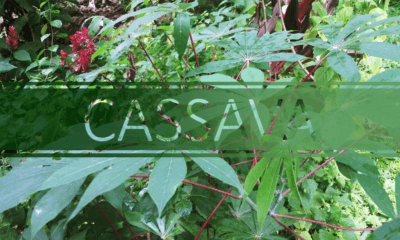
 Special Elements3 years ago
Special Elements3 years agoBest Cassava Manioc, Rankings, Benefits, Cancer Cure & Experience
-

 Special Elements3 years ago
Special Elements3 years agoBest Glutamine Rankings, Benefits, Side Effects & Experience
-

 Special Elements5 years ago
Special Elements5 years agoBest Ambrosia, Wormwood Rankings, Benefits, Side Effects & Experience
-

 Special Elements6 years ago
Special Elements6 years agoBest Culantro Rankings, Benefits, Side Effects & Experience
-
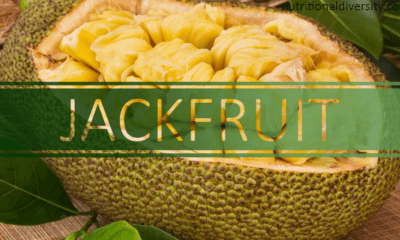
 Special Elements5 years ago
Special Elements5 years agoBest Jackfruit Rankings, Benefits, Side Effects & Experience












